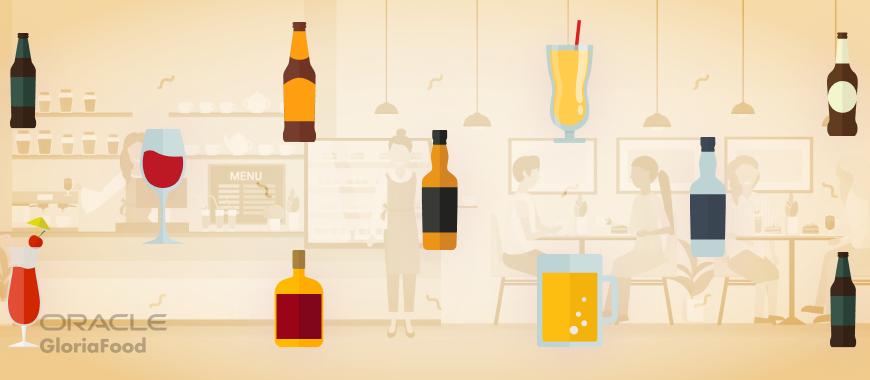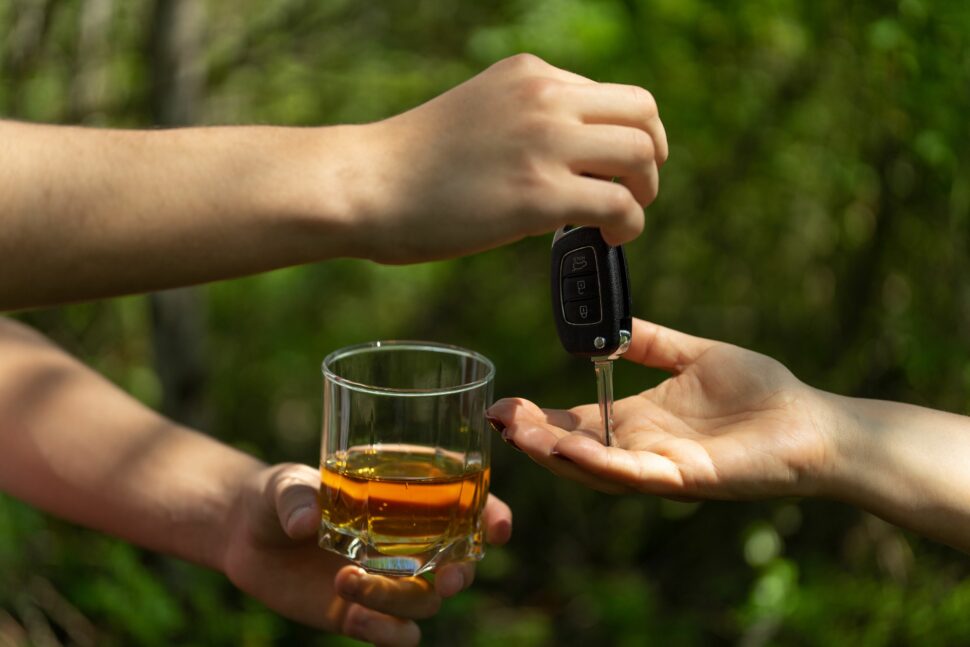- 1.Practice What You Preach
- 2.Price Liquor, Cocktails, and Neat Spirits Responsibly
- 3.Measure Alcohol Before Mixing Drinks
- 4.Hire Trusted Alcohol Delivery People
- 5.Vet Candidates in the Interview Process
- 6.Sell Alcohol Responsibly to All Guests
- 7.Train All Front House Staff in Safe Alcohol Service
- 8.Never Serve Visibly Intoxicated Customers
- 9.Check IDs for All Patrons if They Look Younger Than 30
- 10.Demonstrate Subtle Actions That Are Worth a “Cutoff”
- 11.Establish a Protocol for Intoxicated or Pushy Customers
Serving alcohol at your restaurant is a responsibility you must take very seriously. You don’t want to risk your customers’ or staff’s safety, so it’s vital to practice responsible alcohol service. Below, we provide some tips on serving alcohol at your restaurant responsibly.
Responsible Alcohol Service in Restaurants
Alcohol service is a massive booster for your bottom line, but you’re undertaking a lot of responsibility by serving it. Responsible alcohol service is a must for all types of restaurants. To make sure your restaurant stays compliant, do the following.
1. Practice What You Preach
“Do as I say, not as I do” doesn’t work with children, so why would it work with adults? When an employer expects their employees to be ethical, they must be ethical themselves. Employers will send the wrong message if they’re overserving customers or forgetting to check IDs.
Guests also pick up on what’s considered acceptable in your restaurant. If a group of minors come into your restaurant and don’t get ID’d, more of them will show up. As an owner, you must make a firm commitment to developing safe and responsible alcohol policies on behalf of your staff.
2. Price Liquor, Cocktails, and Neat Spirits Responsibly
There’s strong scientific evidence that pricing liquor drinks higher is an effective strategy for reducing excessive alcohol consumption and its related harms. Different types of alcohol taxes, which retailers often pass on to consumers, encourage restaurants to increase their prices.
With that in mind, it’s crucial to find a good balance between lowering alcohol consumption and staying competitive. Some businesses run happy hour promotions or food and drink deals that help them offset the costs. These promotions can also bring in new customers to your restaurant.
Read more: 15 Unique Restaurant Promotion Ideas that Will Increase Loyalty in 2022
3. Measure Alcohol Before Mixing Drinks
When serving drinks at your house, eyeballing liquor measurements is acceptable. However, restaurant owners can’t use this practice when serving alcohol. If a bartender isn’t careful, they may give your patrons an extra shot every other drink, severely affecting your bottom line.
Not only that, but consistency can ensure your patrons don’t become unexpectedly drunk. If someone’s tolerance is two drinks, but the bartender serves three drinks worth of alcohol, your customer may underestimate how intoxicated they are. That’s bad news if they decide to drive.
The same goes for other alcoholic beverages, including beer. While bottled brews have a fixed size, a draft setup is more variable, and so has implications both in terms of your costs and your responsibility to patrons. Taking advantage of draft beer full service installation to create a consistent performing, safe, and reliable serving setup is sensible in this context.
4. Hire Trusted Alcohol Delivery People
If you’re going to deliver alcohol too, you should have responsible alcohol service policies in place to ensure all alcohol-related products get to the right people safely.
You shouldn’t complete the online delivery unless the person is present to receive the order, has a valid ID to prove their age, and isn’t intoxicated.
This will keep both you and the customer safe. When hiring delivery drivers, train them in safely and responsibly delivering alcohol to patrons.
5. Vet Candidates in the Interview Process
Since people often fill jobs in food service with little to no experience, managers can’t base a candidate’s credentials solely on past employment.
Even when you do, there’s no guarantee that the person is suitable for the job. That’s why a masterful restaurant hiring process is vital for your business.
During the interview questions and answers portion, ask candidates how they would take payments, suggest a menu/drink item, or deal with underage customers.
Then, run a few on-the-job simulations. Ask your bartenders to mix a few popular drinks or ask your servers to take your food order.
6. Sell Alcohol Responsibly to All Guests
Some bartenders and servers may have learned bad habits from their previous employers. They may have been encouraged to push the alcohol, even in situations where they shouldn’t. Don’t take it personally if your new staff members don’t follow the rules the first time.
Instead, speak to them about your policies before they serve alcohol. Tell them that it’s unethical and a possible cause for termination if the server or bartender increases the price of liquor when a patron is drunk. Preach being ethical at all times to avoid any legal incidents.
It’s also essential to comply with local state laws when it comes to alcohol service. These can vary widely depending on where your business is based. If you’re starting a business in NYC, you should know that on-premises (bar or lounge) sales are prohibited on weekdays between 4 AM and 8 AM, and Sundays between 4 AM and 10 AM. Whereas, in Illinois, alcohol can be served from 10 AM to 4 AM seven days a week.
7. Train All Front House Staff in Safe Alcohol Service
Even if your state doesn’t require your staff to participate in specialized training, you should still do it. Front-of-house employees will have to determine whom to cut off and who not to serve, but it could cost you your business if they don’t have the training to make this critical decision.
Sign your employees up for programs like the National Restaurant Association’s ServSafe Alcohol or the TIPS Alcohol Training. Make sure everyone completes it before serving alcohol to guests. Don’t forget to include your greeters in training, as they’re your first line of defense for your restaurant.
8. Never Serve Visibly Intoxicated Customers
If someone walks into your restaurant and looks visibly intoxicated, smells like alcohol, or verbally abuses your staff, you’re well within your right to turn down service. While they may get angry, it’s better than them starting a fight, causing damage to your restaurant, or driving away.
If you have a problem with intoxicated people entering your restaurant or bar, hire a bouncer. Since most greeters are young, they won’t have the skills to throw a person out regardless of training. Remember, alcohol lowers your critical thinking ability, so an incident is always possible.
9. Check IDs for All Patrons if They Look Younger Than 30
Younger servers may feel uncomfortable asking for IDs, but owners should empower them to do so to teach responsible alcohol service. Make a rule that employees should ask anyone who looks under the age of 30 for ID.
Once the server asks for ID, they can’t provide alcohol until the patron proves they’re over 21 (or the legal drinking age in your area).
A great way to remind your staff is by using a POS system that asks employees to check ID. Or, you could set up a password system that locks out menu items based on an inputted birthdate. By asking for ID, you’ll be seen as a trusted restaurant that cares about its customers.
10. Demonstrate Subtle Actions That Are Worth a “Cutoff”
Although online alcohol training programs are worth it, actually dealing with a drunk patron is a whole other story. Most customers won’t act belligerently drunk because they know that warrants a cutoff. When a person is stumbling or slurring their words, they’re already too drunk.
Instead, employers can demonstrate to their staff members subtle signs of intoxication. For example, a person who gradually increases their tip or has bloodshot eyes is getting tipsy. Another sign is laughing at bad jokes. Have a few unfunny jokes in your repertoire, just in case.
11. Establish a Protocol for Intoxicated or Pushy Customers
Dealing with an angry, intoxicated customer can be a terrifying experience for your servers, greeters, and bartenders. Even when overserving was the issue, it shouldn’t be up to them to deescalate the situation. Mistakes happen, and some people appear sober when they aren’t.
Your restaurant should have an alerting system when a customer has been served several drinks (3-4), so the manager can communicate with the patron and solve the problem.
In addition, implementing an online reservation system can also help manage intoxicated customers, especially if they are repeat customers. By highlighting a customer’s past intoxication-related behavior in their reservation profile, you can instantly alert the staff to be more conscious about serving alcohol to that table.
All staff should know how to say “no” to pushy customers and call a taxi or the police if necessary.
Read more: 12 Restaurant Management Tips for Happy Employees & a Successful Business
Responsible Restaurant Ownership Requires Ongoing Training
Responsible alcohol service isn’t just about measuring your drinks, cutting an intoxicated patron off, and pricing your cocktails correctly; it requires ongoing training. If restaurant owners relax their policies, they’ll attract the wrong crowd, lose loyal customers, and possibly go bankrupt.
Keep reading: How to Increase Beverage Sales in Your Restaurant
This article is a guest post.

